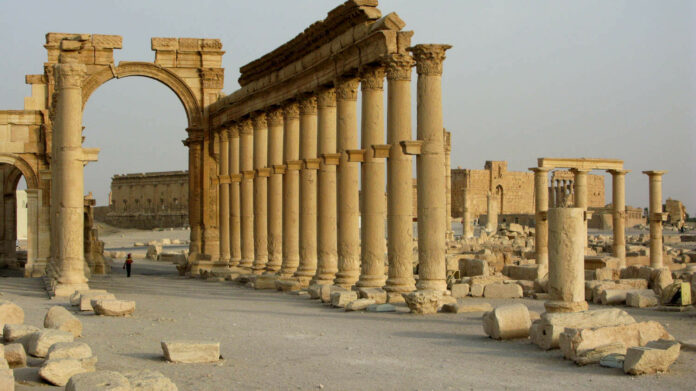
A fascinating article on EnnabBaladi.net illustrates the complexities surrounding the whole issue of looting, smuggling and claims relating to cultural property. Published by a Syrian media organization, the article accuses a Lebanese politician, Nohad Machnouk, of possessing antiquities looted from Palmyra during the rise of ISIS. The evidence is provided in a still from a TV interview that pictures the disputed artefacts on display in the politician’s office.
The first point of note is the muddling of claim and fact: the headline states the claim as fact, whereas the politician – a former Lebanese Minister of the Interior – says they have been in his possession for more than ten years and have been properly registered with the ministry “according to the standard laws, some of which ban their transport out of Lebanon, in order to protect them from trade”.
Although Machnouk’s accusers offer no actual proof for their claims, they do have some authority. One Saad Fansa, co-founder and governing board member of El-Adiyat Association for the Protection of Antiquities in Damascus, said that the pieces had been looted from Palmyra. “Fansa told Enab Baladi that these statues were stolen from the Palmyra Museum during 2014 and 2015, that is when Nohad Machnouk held the position of Lebanese Minister of Interior twice,” the article continues. “This contradicts Machnouk’s story that the statues he had ten years ago [sic] and “are registered at the Culture Ministry according to the standard laws, some of which ban their transport out of Lebanon”.”
Importantly, Fansa added “that Syria has been plundered by many countries, including Russia, Iran, and Turkey, via their members on the ground. The so-called Islamist factions, the Syrian regime forces, and their allies on the ground, including sectarian-based groups such as the Syrian National Defense Forces, contributed significantly to the antiquities trafficking.”
According to Syrian journalist and defender of Syrian antiquities, Omar al-Buniya, it also transpires that the Syrian authorities do not have antiquities archives with descriptions of looted artefacts, according to Directorate-General for Antiquities and Museums (SDGAM). “Al-Buniya pointed out that the SDGAM is to blame for the losses of many historical artifacts in the country, not to mention the fact that the Syrian government itself used to smuggle archaeological artifacts,” the article continues. “Moreover, it did not archive them on purpose so that they could be easily smuggled, according to al-Buniya.”
This infighting claim and counter-claim raises serious questions over the handling of restitution claims in the case of artefacts that can be shown to have been looted. Is there a risk that they are being returned to the very people who looted them in the first place?
This article was first published in the IADAA newsletter of October 2021.
The discussed article was originally published online at Enab Baladi.
Ivan Macquisten analysed also how it happened that the international art market has become a cultural bogeyman.
As for Palmyra there is an ongoing project to reconstruct the damaged site virtually in 3D.



